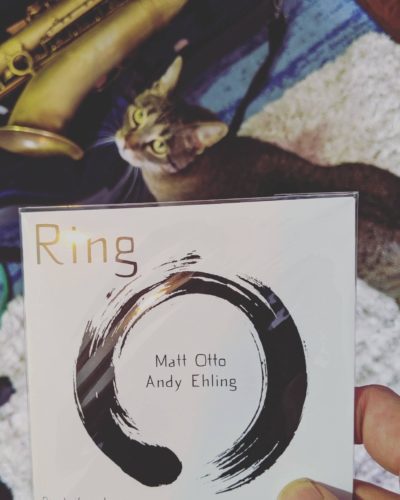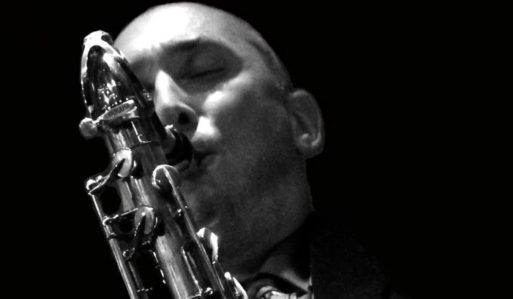The CD is pressed – here are all the tracks on one post. You can also listen to the whole album for free or buy it on Bandcamp here.

Matt Otto: tenor sax.
Andy Ehling: alto sax.
Leonard Thompson: piano.
Brad Williams: drums.
Ben Leifer: bass.
.
All The Compositions are included in the PDF below:
.
.
You can also listen to the whole album for free or buy it on Bandcamp here.
.
“Tecumseh” is a dedication to the Shawnee Indians and Chief Tecumseh. European and Spanish settlers displaced the Shawnee Indians throughout the Midwest, while simultaneously diminishing their numbers through both war and infectious disease. Tecumseh spoke out against the invasion in 1800 saying, “You must bear in mind these strangers are not as you, they are devoid of natural affection; loving gold or gain better than one another”. He continued warning that the invaders were systematically killing the Indian people as well as destroying the land, trees, flowers and rivers.
200 years later, Tecumseh’s critique still seems relevant.
.
.
This second track “Roza” is dedicated to Rosa Luxemburg (1871 – 1919). Here are a few quotes from her speeches and writings that I found inspiring.
“Only to the rude ear of one who is quite indifferent
does the song of a bird seem always the same.”
“Capitalism, as a result of its own inner contradictions,
moves toward a point when it will be unbalanced,
when it will simply become impossible.”
“Before a revolution happens, it is perceived as impossible;
after it happens, it is seen as having been inevitable.”
Overall this piece is melodic and very simple, like a folk song. It is mostly diatonic (in the key of Eb Major) with only one chord outside the key center (Db Major in the final cadence, functioning as sub-V7 of iv-7 using principles of modal interchange). The bass ostinato is displaced by a beat, starting on the “and” of one, giving the melody an unexpected entrance as the harmonic rhythm can be perceived on a different beat. The interlude or C section after the melody has 4 short melodic phrases grouped in 4 different time signatures – 5/8 in the alto, 6/8 in the tenor, 4/4 in the bass and 7/8 in the piano. This creates a undulating counterpoint almost like a melodic mobile. Leonard and I improvise over the A-B section while Andy plays over the open C section.
.
.
This is a piece dedicated Bruce Adolphe’s book, “The Mind’s Ear”. This book is an excellent guide to improving your ability to “audiate” or hear music in your mind. This piece is loosely based on the A section to Body and Soul. I wrote it by ear without realizing that it was basically Body and Soul until reflecting on it after the fact. I’ve done this a few times in my composing practice, either writing a tune that was already a progression or re-writing a tune I had already written but forgotten about.
.
.
“Azul” is the 4th track from the album “Ring”. The piece is a simple blues waltz.
The introduction and outro features three short melodic phrases written in rhythmic/melodic counterpoint. The chord progression is a slight variation of a standard blues. Bars 3 and 4 use the altered I chord with the 3rd in the bass which is reminiscent of a major 7#5 sound. Bar 8 goes to Sub V7 of V and descends by whole step (V7 of iii, V7 of ii, V7 of I).
.
.
“Ring”; I wrote this piece specifically for this recording project. The dedication here is to the Enso Ring which is often seen in Japanese Zen. Ideally the Enso ring is painted by a Zen master while maintaining an empty state of mind, embracing the void. This imperfect circle representation of concept of emptiness juxtaposed against the prefect imperfection of reality.
Leonard Thompson plays an amazing introduction to the song and the band captures the composition perfectly.
.
“These Ring On”; I composed this song in three for the recording date. The composition is two distinct melodic phrases set witting a simple harmonic progression. The solo sections are distinct and only reflect a simplified version of the harmony heard during the melody. Andy Ehling improvises over an open vamp to break up the form while Leonard Thompson and I play over the “changes”. There’s a simple background figure behind the last chorus of Leonard’s solo. Sometimes, in an effort to avoid an obvious ending, I write a coda that takes up an inordinate amount of rehearsal time.
.
.
“A Way” is based on a re-harmonization of the chord progression to Dave Brubeck’s song, “In Your Own Sweet Way”. I added an interlude of descending Sus Chords as an alternative solo section as well as simplifying the chord changes on the A and B section, removing ii-7 chords from the cadences.
.
.
You can also listen to the whole album for free or buy it on Bandcamp here.
